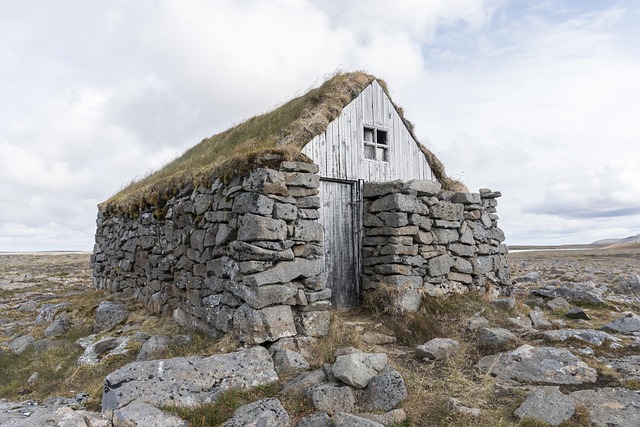Sustainable roof design, led by green roofing systems and eco-friendly solutions, is revolutionizing urban water management in today's digital era. These innovative systems mimic natural hydrological processes, enhancing water infiltration and storage through permeable materials. Solar-integrated roof designs further boost sustainability by combining renewable energy generation with effective water management, offering practical benefits like reduced stormwater runoff and lower carbon footprints. This holistic approach not only promotes better water distribution and energy efficiency but also makes green roof installation a popular choice for environmentally conscious builders and homeowners.
Water management is a growing concern, driving innovation in sustainable roofing. This article explores the transformative power of permeable materials and their role in addressing urban water challenges. We delve into the benefits of sustainable roof design, highlighting eco-friendly solutions like various types of green roofing systems. Additionally, we examine energy-efficient and solar-integrated designs that not only enhance water management but also contribute to environmentally friendly installations.
Understanding Permeable Materials and Their Role in Water Management
Permeable materials are revolutionizing water management strategies, especially in urban areas where traditional roofing systems contribute to drainage challenges and water stress. These materials, often referred to as green roofing systems, offer an innovative approach by allowing water to filter through their structure, mimicking natural hydrological processes. By integrating sustainable roof design principles, eco-friendly roof solutions can significantly enhance water infiltration and storage, reducing the strain on municipal drainage systems.
In the context of environmentally friendly roof installations, permeable materials come in various forms, from porous bricks and tiles to specialized composite panels. Solar-integrated roof designs further elevate their benefits by combining renewable energy generation with effective water management. The use of sustainable roofing materials not only promotes better water distribution but also contributes to overall energy efficiency, making them a prominent choice for those seeking green roofing solutions.
Benefits of Sustainable Roof Design: A Green Approach
Sustainable roof design offers a range of benefits that extend beyond aesthetics and property value. By incorporating eco-friendly roof solutions like green roofing systems, buildings can significantly contribute to urban water management. These innovative designs utilize sustainable roofing materials that allow for effective drainage and infiltration of rainwater, reducing stormwater runoff and easing pressure on municipal drainage systems.
Moreover, energy-efficient roof designs often incorporate solar panels, integrating renewable energy sources into the structure. This not only decreases carbon footprints but also contributes to a building’s overall energy efficiency. The use of environmentally friendly roof installations also provides insulation benefits, helping regulate indoor temperatures and reducing the need for excessive heating or cooling, further saving on energy costs. These green roof installation practices represent a holistic approach to sustainable building design that balances functionality, aesthetics, and environmental responsibility.
Eco-Friendly Roof Solutions: Types and Applications
Eco-friendly roof solutions have emerged as a powerful tool in urban water management, offering both aesthetic and functional benefits. These innovative designs incorporate sustainable roofing materials that not only reduce the environmental impact but also contribute to more efficient water use. Among the popular options are green roofing systems, which involve planting various flora on rooftops, providing insulation and absorbing rainwater. This natural process significantly reduces stormwater runoff, easing pressure on drainage systems during heavy rains.
One prominent type is solar-integrated roof designs that combine photovoltaic panels with green roof components. These dual-purpose installations maximize space utilization while enhancing energy efficiency. They also foster biodiversity by creating habitats for urban wildlife, making them a harmonious addition to environmentally conscious buildings. Other eco-friendly roof solutions include permeable membranes and bio-swales integrated into the roofing structure, further emphasizing the versatility and adaptability of green roofing systems in modern water management strategies.
Integrating Solar Power: Solar-Integrated Roof Designs
Integrating Solar Power with Sustainable Roof Design
The concept of solar-integrated roof designs offers a compelling solution for enhancing water management while embracing renewable energy. These innovative systems combine the benefits of green roofing with photovoltaic (PV) technology, creating an eco-friendly and aesthetically pleasing approach to sustainable roof design. By incorporating solar panels into roof structures, buildings can generate clean energy, reduce their carbon footprint, and contribute to a greener environment.
Solar-integrated roofs utilize permeable materials that allow water infiltration, supporting efficient stormwater management. The PV panels are seamlessly integrated, either flush with the roof surface or slightly elevated, ensuring optimal sunlight exposure for energy production. This dual functionality not only promotes water conservation but also contributes to the overall efficiency and longevity of the building’s structure. Eco-friendly roof solutions like these are gaining popularity as developers and architects strive for more energy-efficient and environmentally friendly construction practices.
The Environmental Impact of Green Roofing Systems
Green roofing systems, with their innovative use of sustainable roof design and eco-friendly roof solutions, are transforming urban landscapes. These systems integrate living vegetation into rooftops, offering a range of environmental benefits. The primary impact lies in improved water management, as the plants act as natural filters, absorbing excess rainwater and reducing stormwater runoff, thereby mitigating flooding risks.
Moreover, green roofing systems contribute to energy efficiency. The vegetative layer provides insulation, cooling effects during hot seasons, and thermal mass, which can stabilize indoor temperatures. This reduces the need for artificial cooling, leading to lower energy consumption and carbon emissions. Additionally, solar-integrated roof designs further enhance sustainability by harnessing renewable energy from the sun, making them a holistic part of any community’s transition towards greener, more sustainable urban environments.
The integration of permeable materials in water management strategies, coupled with innovative designs like sustainable roof structures and eco-friendly solutions, offers a promising path towards more efficient and environmentally friendly urban landscapes. Green roofing systems, with their ability to mitigate environmental impact, gain prominence as cities seek to embrace sustainability. Solar-integrated roof designs further enhance these systems, promoting energy efficiency and reducing carbon footprints. By adopting these practices, we can transform traditional roofing into a vital component of urban water management and ecological preservation, ensuring a brighter, more sustainable future for our cities.
